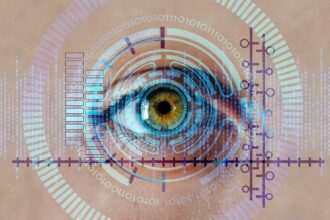
Effective cyber security measures are tough to implement. Cyber attackers are getting smarter because there are far more devices than people these days. Who and how is attacking modern business? How can you manage risks and reduce the impact of hacker attacks? According to a global information security study, cybercriminals and hackers send billions of fake emails daily, leading to the theft of personal information every day. The cybersecurity market is estimated to be worth $100 billion annually, and the public and private sectors face increasing global cyber attacks daily. The cumulative annual growth rate of purchases of cybersecurity software, hardware, and professional services was 12%. Increased investment in Managed Detection and Response (MDR) service allows you to worry less about fraud, theft, and data leakage due to cyber attacks.
Only 3% of IT professionals have the necessary education, training, and certifications. Government agencies and public and private companies must take cyber threats more seriously and invest more resources in building effective cyber defenses. Organizations need to pay more attention to professional training, as more than 40% of cybersecurity breaches are directly related to employee behavior. To this end, awareness, training, and appropriate cyber security simulations are essential as employees become a strong shield protecting the organization’s critical digital assets.
A persistent shortage of global cybersecurity talent
There is still a lack of investment in cybersecurity education, training, and certification programs at the undergraduate, graduate, and graduate levels. The staggering increase in cyber attacks worldwide has led to a significant increase in the number of cyber security and IT professionals required to meet the growing cyber security demands worldwide, creating bottlenecks. The development of zero-trust architecture allows for to prevention of cyber attacks; companies are increasingly using Zero Trust software architecture. Zero Trust Underdefense architecture technologies create micro-environments in information systems, increase data segmentation and create micro-firewalls in networks, reducing the likelihood of repeated attacks and the return of attackers to information systems after a cyber breach.
The rise of insider threats from cyber attacks
Businesses can increase their investment in cybersecurity training and integrated cyber defense by implementing data encryption, two-factor authentication, zero-trust architecture, advanced data analytics, continuous diagnostics, monitoring, detection, and incident response. Machine learning mechanisms and blockchain technology are often used. As a result, cybercriminals try to bypass all security measures by bribing employees with access to valuable intellectual property and critical company IT resources. According to Underdefense, the number of devices connected to the Internet is increasing. Due to the significant increase in the number of devices connected to the Internet, the potential for cyber incidents is expected to increase significantly. Therefore, it is essential to protect these devices from risks and software changes with MDR.
The rise of distributed denial-of-service attacks
The enormous success of DDoS attacks in recent years indicates that the number of such attacks will increase worldwide—increasing corporate email engagement. Attacks on corporate email have increased over the past 18 months. Attacks are well-planned, and their number and complexity are growing exponentially. In most cases, these attacks are aimed at company management. An important counter to this is the rapid development of machine learning and artificial intelligence to counter Underdefense cyber attacks. Organizations worldwide are considering several deployment models to apply machine learning and artificial intelligence to improve proactive cyber defense tactics and attack monitoring, intrusion detection, and incident response capabilities.
Cyber attacks using the trust of the company’s customers
Successful cyberattacks on supply chains in many industries (oil, gas, energy, defense, aviation, healthcare, manufacturing, retail, and consumer goods) have led to cyberattacks targeting the most vulnerable organizations in those chains (the supply chain). Usually, these are representatives of small businesses and suppliers of small products, and such attacks can gain access to large organizations’ intellectual property and IT resources. Too many organizations do not provide adequate authority and support to the chief information security officer. This is manifested in the lack of funds, sufficient resources, and commitment of senior management to ensure an adequate level of cyber protection. As before, many stresses more on network bandwidth and ease of access to data and applications, forgetting about protecting IT systems’ IT assets, information, and resilience from devastating cyber attacks. On the one hand, companies are trying to protect themselves and their information from growing cyber fraud and data security breaches. At the same time, the complexity and number of cybersecurity, data privacy laws, regulations, and contractual requirements are increasing.
To reduce the risks of cyber fraud and severe data breaches, as well as the negative economic and reputational impact of cyber attacks, Underdefense recommends:
Create a cybersecurity culture in your organization. Through comprehensive awareness and training programs, management must be convinced to continuously encourage and support all employees to implement effective policies, procedures, and processes to ensure a high level of cyber security. Use the services of Underdefense’s experienced information security experts. You must have a robust information security leader with sufficient resources and funding to take the necessary strategic and tactical actions. This allows you to develop and implement a comprehensive cyber risk management program for your organization. Maintain regular cyber risk assessment practices. This type of assessment may include:
- Email attack risk assessment;
- Assessment of network and endpoint cyber attacks;
- Analysis of potential cyber vulnerability;
- Vulnerability assessment of software code.
Look for phishing emails that contain elements of social engineering. Encrypt all information. Check your system access credentials. Implementing multi-factor authentication (MFA), including biometrics (fingerprint, voice, or facial recognition), is essential. Protect your company’s assets. This is where you need to implement Managed Detection and Response (MDR) architecture, which is designed to isolate data and restrict access. This reduces the potential damage from unauthorized access to confidential information.
Develop a rapid response plan for cyber attacks
At this stage, a well-coordinated incident response plan should be developed and regularly reviewed to ensure rapid detection, remediation, and recovery of the company’s system after a cyber attack. 24/7 Monitoring Detection and Response (MDR) is essential. Continuously monitor, detect and respond to all cyber incidents, including messaging and network events, as well as software and endpoint audits. Use advanced security and event information management (SIEM) software, data visualization tools, automation tools, and artificial intelligence (AI). Secure IT systems to ensure a timely and effective software update management program. Ensure the resilience of IT systems against cyber attacks. The implementation and regular testing of a business continuity plan and a disaster recovery plan, including an autonomous data backup system, play an essential role here.
What are cybersecurity features available at Underdefenses?
Cyber security audit according to international standards and local regulations.
Preparation of strategic and regulatory documents.
Data classification and protection.
Investigation of cyber security incidents.
Constant monitoring of the infrastructure.
Thorough scanning for vulnerabilities.
Implementation of cyber security solutions.
Implementation of the information leakage prevention system.
Training staff to protect against cyber fraud and email threats.








